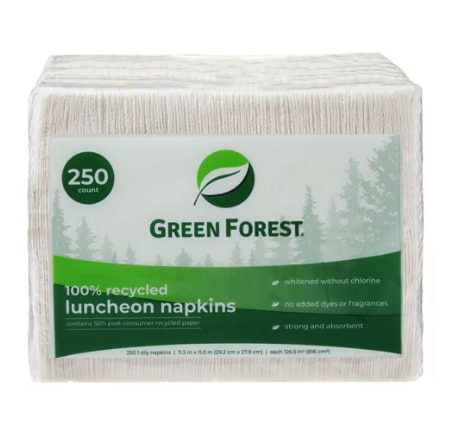Electronic waste is a nightmare. There’s no way around it. I know this because I’m married to someone who works in the world of electronic hardware, and his employer constantly has a ridiculous amount of e-waste.
E-waste is less of a headache for people like you and me, but that’s only because we’re not discarding pounds of it every day. Instead, it’s maybe a dead toaster every decade or batteries a couple times a year. Still, we want to get rid of all this stuff properly, right? Everyone’s few ounces eventually add up to tons when we aggregate it.
What is e-waste?
E-waste, electronic waste, e-scrap and end-of-life electronics all generally refer to the same thing: electronics that are no longer useful and — we hope — get recycled or disposed of properly.
Unfortunately, lots of e-waste ends up in landfills or along lonely side streets, which really means it’s destined for your body, thanks to leaching and runoff that infiltrate soil and waterways. It’s mystifying that people can manage to haul a broken dryer to the edge of a forlorn road and toss it from their truck — but not figure out how to drive the dead appliance to a bona fide recycling hub, which is probably no farther than their illegal dumping spot.
Why is e-waste a problem?
My eyes glaze over when I read statistics, so to spare you the same, here’s one sentence to put all this talk in perspective: E-waste is the world’s fastest-growing solid waste stream, according to a 2023 review.
One of e-waste’s biggest challenges is the fact that one item has multiple components, many of which need to be discarded and/or recycled in different ways. To give you a sense, e-waste can have dozens of different types of metals, some precious, including copper, gold, silver, palladium, aluminum and iron. Many of those can be recycled or don’t harm the environment.
But e-waste also has toxic heavy metals including lead, mercury and cadmium, as well as polychlorinated biphenyls and brominated flame retardants — things that need to be disposed of properly. E-waste also often has plastic, and different types of plastic at that, some of which has no recycling market. Or e-waste has ceramic or rubber. See? Nightmare.
The world’s worst e-waste offenders are developing countries, which have become dumping grounds for e-waste and lack tough rules to prevent improper disposal. That said, some developed countries, such as Japan, have strict regulations. The good news on the U.S. front is that generally municipal and county recycling locations let you drop off entire spent units, and then they handle everything from there.
Examples of e-waste
If you still aren’t clear on what constitutes e-waste, here’s a comprehensive list of e-waste items an ordinary person might have or use:
refrigerators, freezers, air conditioners, dehumidifiers, heat pumps, oil-containing radiators, other temperature exchange equipment that uses non-aqueous liquids, monitors, televisions, liquid crystal display photo frames, computers (desktop or laptop), keyboards, fluorescent lamps, high-density discharge lamps (including high-pressure sodium lamps and metal halides, low-pressure sodium lamps, light-emitting diodes), washing machines, dryers, dishwashers, toasters, toaster ovens, blenders, electric stoves, electric hot plates, equipment that reproduces sounds and images, printers, photocopiers, photovoltaic solar panels, vacuum cleaners, carpet cleaners, electrical appliances for sewing, lamps, microwave ovens, ventilators, irons, electric ovens, electric kettles, digital clocks, digital watches and watches whose batteries can’t be removed, electric shavers, electric scales, electrical appliances for hair or body care, calculators, radios, digital cameras, image recorders, high-fidelity equipment, electric toys, smoke detectors, heating controllers, thermometers, small power tools, small medical equipment, small monitoring instruments, small devices with photovoltaic solar panels, satellite radios, cell/mobile phones, global positioning systems, calculators, routers, telephones, video game units, cables, connectors, virtual-reality devices, chargers, headphones, electric toothbrushes, speakers, musical instruments with electronic components (keyboards, for example)
In short: If it functions electronically or has a battery built into it, it ends up as e-waste.
What to do with e-waste, and other steps you can take
Here are three straightforward ways to help alleviate the world’s complex e-waste problem:
1. Check your local recycling locations and rules
I mean, this is easy, right? Take 10 minutes to do some research so you know what can be dropped off where. You pay taxes for government services. Put them to use. Sometimes stores, such as Best Buy, take e-waste items too.
2. Use your cell phone and computer (and other electronic stuff!) for as long as you can
If so many companies weren’t excessive profit-seeking jerks none of us would need this tip because our electronic products would last a very long time. Instead, companies release new versions of their products on a regular basis, so, you know, they can make money.
Fight back: You need a new cell phone or computer only when your system is too old for security updates (you can increase memory and such without buying a new unit). Old software is usually more risky on an outdated computer than an outdated phone, especially if you mainly use your phone to, well, talk on the phone and not do a bunch of stuff on apps or check your email. Tech columnists can keep you in the know on when to replace what.
3. Use rechargeable batteries
It should be a cinch to recycle batteries, but at least in my town, it’s not. You can’t put them in a curbside recycling bin, and not every drop-off location accepts them.
Your best bet is to buy rechargeable batteries from the same trusted brands you’d buy regular batteries. Using rechargeable batteries means batteries last a heck of a lot longer than ordinary batteries — years and years, even with regular use. It’s also a relief to constantly have batteries handy because all you need to do is recharge them when their power runs down.
Featured Products



The post The E-Waste Crisis: It’s Worse Than You Think first appeared on The Upside by Vitacost.com.

